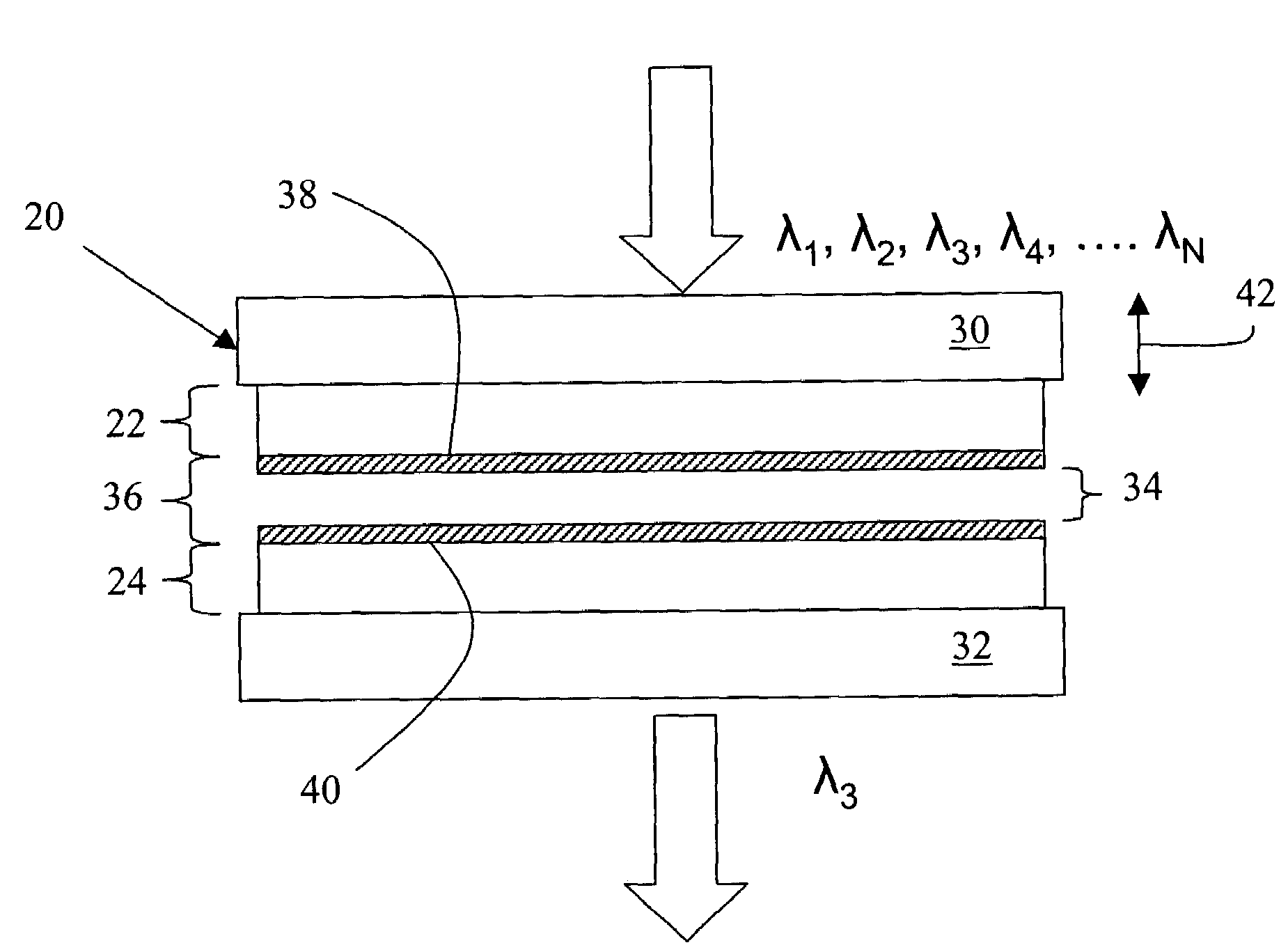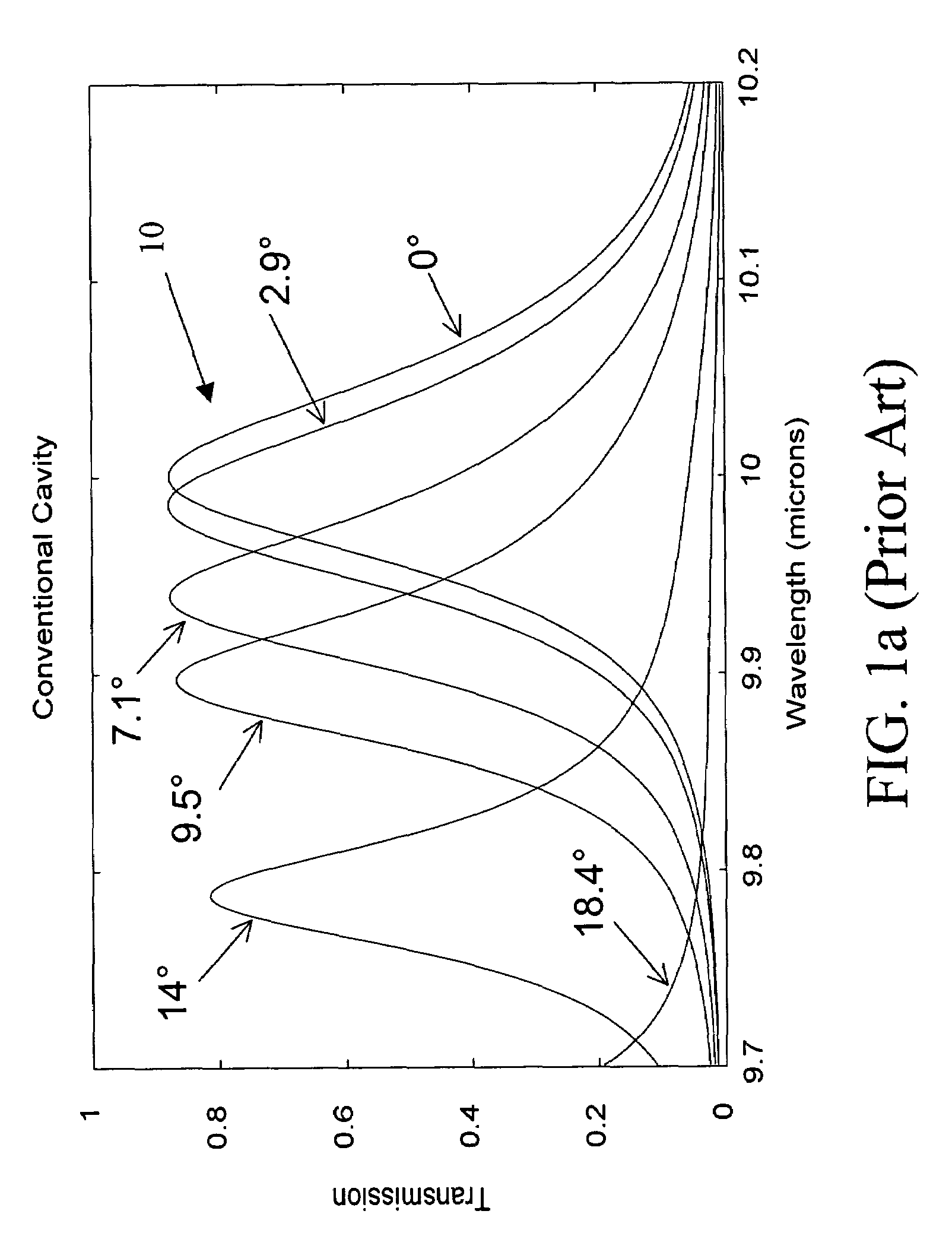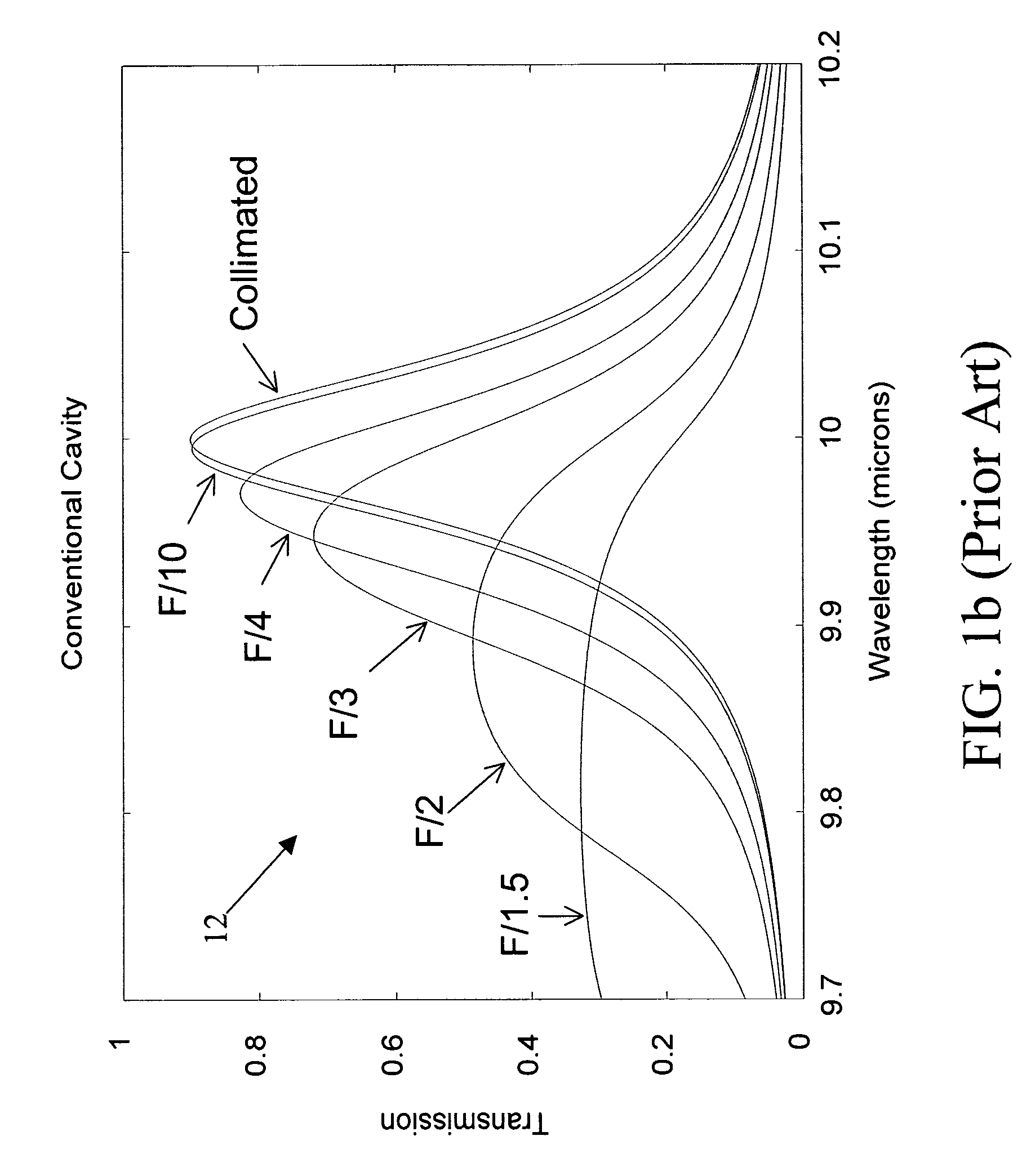Partitioned-cavity tunable fabry-perot filter
a fabry-perot filter and cavity technology, applied in the field of tunable cavity tunable fabry-perot filters, can solve the problems of reducing the angle sensitivity effect, increasing the size, weight and cost of the system, and not being able to employ a segmented filter array, so as to reduce the angle sensitivity, less sensitive to angle of incidence, and greater light gathering power
- Summary
- Abstract
- Description
- Claims
- Application Information
AI Technical Summary
Benefits of technology
Problems solved by technology
Method used
Image
Examples
Embodiment Construction
[0030]The present invention provides a tunable Fabry-Perot filter that is less sensitive to angle of incidence and thus suitable for use in optical imaging systems having lower f-number and hence greater light gathering power and smaller blur circle.
[0031]As shown in FIG. 2, a tunable Fabry-Perot filter 20 includes a pair of planar, parallel reflectors 22 and 24, typically multilayer dielectric, graded index or metallic films formed on transparent substrates 30 and 32, surrounding a variable air gap 34. The conventional air gap cavity is replaced with a partitioned cavity 36 that has an effective refractive index, neff that is greater than one (neff>1.0). The higher refractive index reduces the angle of the light Θc within the cavity layer, which in turn reduces wavelength shift and spectral broadening.
[0032]The partitioned cavity 36 includes a pair of partitioned cavity dielectric layers 38 and 40 formed on the reflectors 22 and 24 on either side of variable air gap 34. Each of the...
PUM
| Property | Measurement | Unit |
|---|---|---|
| bandpass wavelength | aaaaa | aaaaa |
| bandpass wavelength | aaaaa | aaaaa |
| optical thickness | aaaaa | aaaaa |
Abstract
Description
Claims
Application Information
 Login to View More
Login to View More - R&D
- Intellectual Property
- Life Sciences
- Materials
- Tech Scout
- Unparalleled Data Quality
- Higher Quality Content
- 60% Fewer Hallucinations
Browse by: Latest US Patents, China's latest patents, Technical Efficacy Thesaurus, Application Domain, Technology Topic, Popular Technical Reports.
© 2025 PatSnap. All rights reserved.Legal|Privacy policy|Modern Slavery Act Transparency Statement|Sitemap|About US| Contact US: help@patsnap.com



